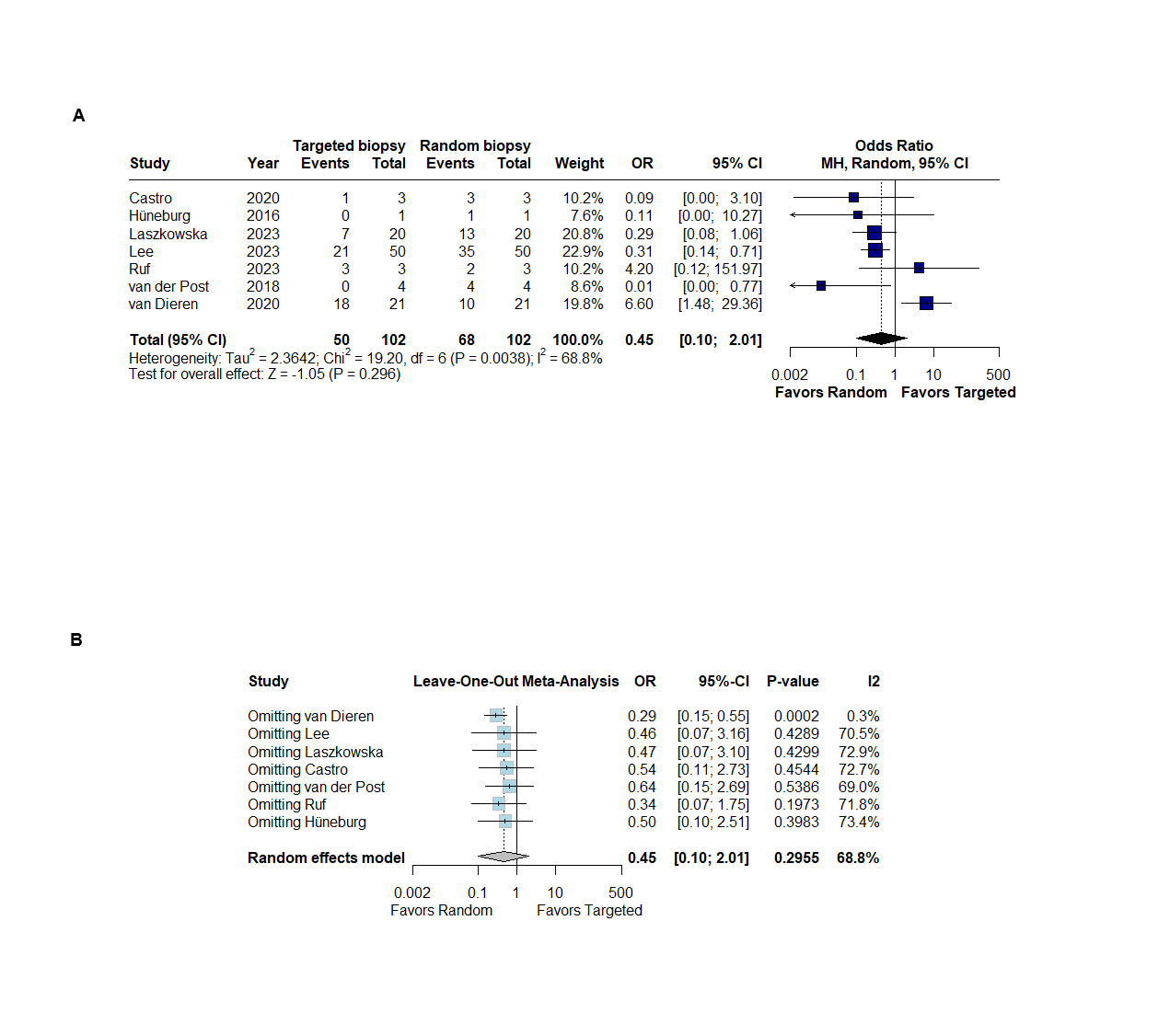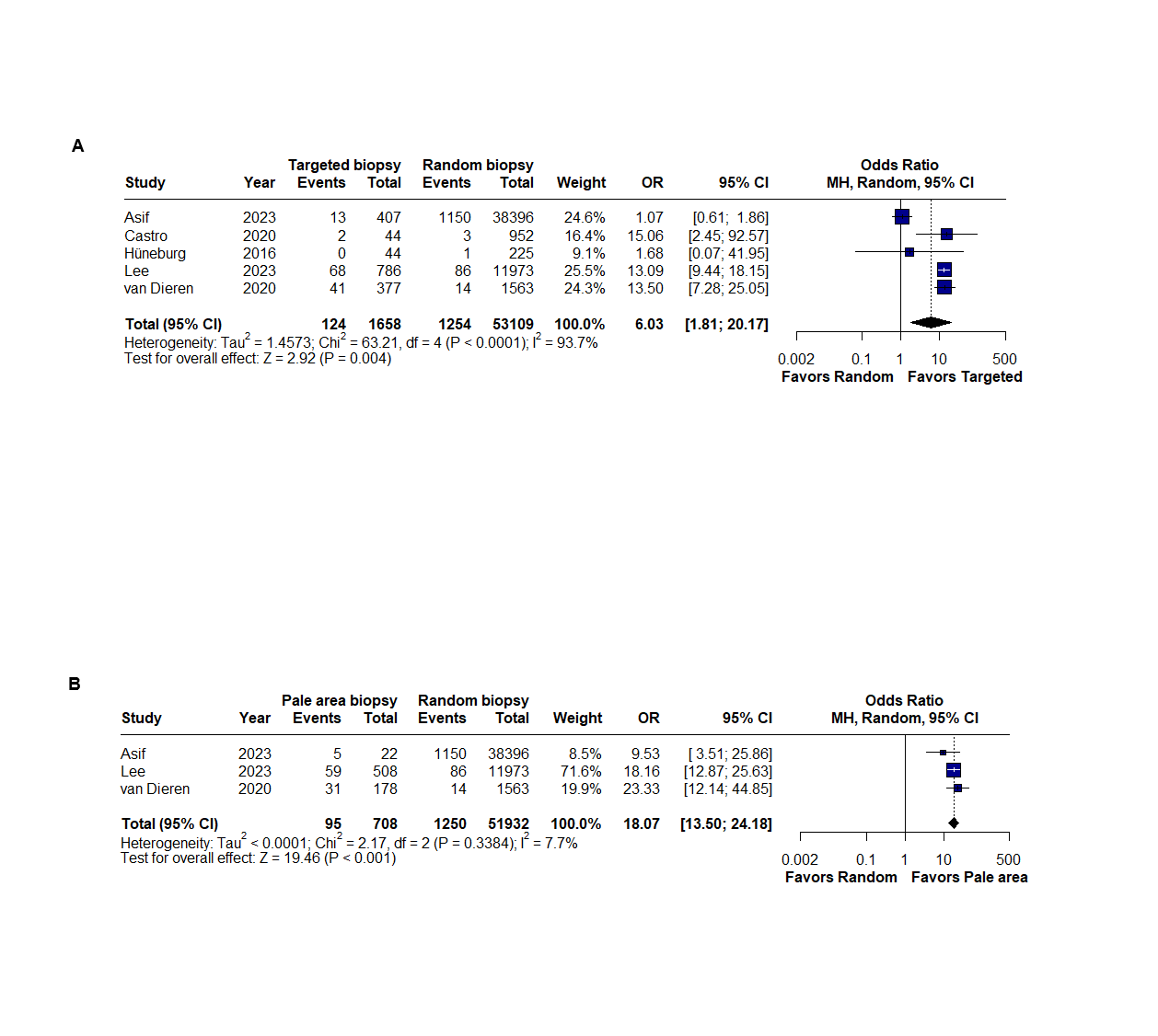Tuesday Poster Session
Category: Stomach and Spleen
P6318 - Targeted vs Random Biopsy in Individuals Undergoing Surveillance for Hereditary Diffuse Gastric Cancer: A Systematic Review and Meta-Analysis of Endoscopic Detection Strategies
Tuesday, October 28, 2025
10:30 AM - 4:00 PM PDT
Location: Exhibit Hall

Leonardo C. Süffert (he/him/his)
Pontifícia Universidade Católica do Rio Grande do Sul
Porto Alegre, Rio Grande do Sul, Brazil
Presenting Author(s)
Leonardo C. Süffert, 1, Isabella H. Padilha, 1, João Lucas Moreira, 2, Henrique S. de Abreu, 1, Maria Antônia P. Saldanha, 1, Carolina R. Hartmann, MD3, Frederico Friedrich, PhD4, Victor A. Galvão, MD, MSC5
1Pontifícia Universidade Católica do Rio Grande do Sul, Porto Alegre, Rio Grande do Sul, Brazil; 2Universidade Estadual de Feira de Santana, Feira de Santana, Bahia, Brazil; 3Pontificia Universidade Católica de Porto Alegre, Porto Alegre, Rio Grande do Sul, Brazil; 4Pontificia Universidade Catolica do Rio Grande do Sul, Porto Alegre, Rio Grande do Sul, Brazil; 5Hospital Geral Clériston de Andrade, Feira de Santana, Bahia, Brazil
Introduction: Surveillance endoscopy is essential in managing individuals at increased risk for hereditary diffuse gastric cancer (HDGC). However, it remains unclear which biopsy technique—random or targeted—offers greater diagnostic yield for detecting signet ring cell carcinoma (SRCC). This meta-analysis aimed to compare the diagnostic performance of both approaches.
Methods: PubMed, Embase, Scopus, and Web of Science were searched for studies that reported both random and targeted biopsies performed during the same surveillance endoscopy for HDGC. Odds ratio (OR) and 95% confidence interval (CI) were used to assess yield outcomes. Case reports, cross-sectional studies, and publications with inadequate methodology were excluded.
Results: Nine cohort studies were included, comprising 736 patients undergoing surveillance, during which a total of 1,717 upper gastrointestinal endoscopies were performed. The pooled analysis showed no significant difference in the diagnostic yield of patients with SRCC between random and targeted biopsies (OR 0.45; 95% CI 0.10–2.01; p = 0.296; I² = 68.8%). However, a sensitivity analysis using the leave-one-out method—excluding a study with very low adherence to systematic protocols—revealed a significant advantage favoring random biopsies (OR 0.29; 95% CI 0.15–0.55; p = 0.0002; I² = 0.3%). In the per-sample analysis, targeted biopsies showed superior effectiveness in detecting SRCC foci (OR 6.03; 95% CI 1.81–20.17; p = 0.004; I² = 93.7%), especially in pale areas (OR 18.07; 95% CI 13.50–24.18; p < 0.001; I² = 7.7%).
Discussion: A greater performance of random biopsies in the sensitivity analysis highlights their clinical importance in identifying patients with HDGC. The apparent equivalence in the primary outcome may reflect poor adherence to systematic protocols rather than true parity—a hypothesis supported by the exclusion of the study with limited random sampling. However, expanding this approach requires careful evaluation of clinical, technical, and environmental impact, which remain underexplored in HDGC surveillance. Targeted biopsies were more efficient per sample, underscoring the value of meticulous inspection and adjunctive tools like Narrow Band Imaging (NBI) to visualize subtle lesions. These findings support a complementary role for both strategies and reveal gaps in current protocol standardization. This manuscript was prepared with the assistance of generative artificial intelligence.

Figure: Figure 1. (A) Pooled analysis comparing the proportion of patients diagnosed with SRCC through targeted versus random biopsy during surveillance endoscopy, showing no statistically significant difference. (B) Leave-one-out sensitivity analysis presenting the proportion of patients diagnosed with SRCC via targeted vs. random biopsy, which revealed improved diagnostic performance of random biopsies after exclusion of one study with inadequate adherence to endoscopic protocols.

Figure: Figure 2. (A) Comparison of per-sample effectiveness between targeted and random biopsies for SRCC detection, considering all samples collected during surveillance endoscopy, demonstrated greater efficiency of targeted biopsies. (B) Limiting the analysis to targeted biopsies taken from pale mucosal areas under endoscopic visualization, the technique exhibited even greater per-sample effectiveness compared to random biopsies.
Disclosures:
Leonardo Süffert indicated no relevant financial relationships.
Isabella Padilha indicated no relevant financial relationships.
João Lucas Moreira indicated no relevant financial relationships.
Henrique de Abreu indicated no relevant financial relationships.
Maria Antônia Saldanha indicated no relevant financial relationships.
Carolina Hartmann indicated no relevant financial relationships.
Frederico Friedrich indicated no relevant financial relationships.
Victor Galvão indicated no relevant financial relationships.
Leonardo C. Süffert, 1, Isabella H. Padilha, 1, João Lucas Moreira, 2, Henrique S. de Abreu, 1, Maria Antônia P. Saldanha, 1, Carolina R. Hartmann, MD3, Frederico Friedrich, PhD4, Victor A. Galvão, MD, MSC5. P6318 - Targeted vs Random Biopsy in Individuals Undergoing Surveillance for Hereditary Diffuse Gastric Cancer: A Systematic Review and Meta-Analysis of Endoscopic Detection Strategies, ACG 2025 Annual Scientific Meeting Abstracts. Phoenix, AZ: American College of Gastroenterology.
1Pontifícia Universidade Católica do Rio Grande do Sul, Porto Alegre, Rio Grande do Sul, Brazil; 2Universidade Estadual de Feira de Santana, Feira de Santana, Bahia, Brazil; 3Pontificia Universidade Católica de Porto Alegre, Porto Alegre, Rio Grande do Sul, Brazil; 4Pontificia Universidade Catolica do Rio Grande do Sul, Porto Alegre, Rio Grande do Sul, Brazil; 5Hospital Geral Clériston de Andrade, Feira de Santana, Bahia, Brazil
Introduction: Surveillance endoscopy is essential in managing individuals at increased risk for hereditary diffuse gastric cancer (HDGC). However, it remains unclear which biopsy technique—random or targeted—offers greater diagnostic yield for detecting signet ring cell carcinoma (SRCC). This meta-analysis aimed to compare the diagnostic performance of both approaches.
Methods: PubMed, Embase, Scopus, and Web of Science were searched for studies that reported both random and targeted biopsies performed during the same surveillance endoscopy for HDGC. Odds ratio (OR) and 95% confidence interval (CI) were used to assess yield outcomes. Case reports, cross-sectional studies, and publications with inadequate methodology were excluded.
Results: Nine cohort studies were included, comprising 736 patients undergoing surveillance, during which a total of 1,717 upper gastrointestinal endoscopies were performed. The pooled analysis showed no significant difference in the diagnostic yield of patients with SRCC between random and targeted biopsies (OR 0.45; 95% CI 0.10–2.01; p = 0.296; I² = 68.8%). However, a sensitivity analysis using the leave-one-out method—excluding a study with very low adherence to systematic protocols—revealed a significant advantage favoring random biopsies (OR 0.29; 95% CI 0.15–0.55; p = 0.0002; I² = 0.3%). In the per-sample analysis, targeted biopsies showed superior effectiveness in detecting SRCC foci (OR 6.03; 95% CI 1.81–20.17; p = 0.004; I² = 93.7%), especially in pale areas (OR 18.07; 95% CI 13.50–24.18; p < 0.001; I² = 7.7%).
Discussion: A greater performance of random biopsies in the sensitivity analysis highlights their clinical importance in identifying patients with HDGC. The apparent equivalence in the primary outcome may reflect poor adherence to systematic protocols rather than true parity—a hypothesis supported by the exclusion of the study with limited random sampling. However, expanding this approach requires careful evaluation of clinical, technical, and environmental impact, which remain underexplored in HDGC surveillance. Targeted biopsies were more efficient per sample, underscoring the value of meticulous inspection and adjunctive tools like Narrow Band Imaging (NBI) to visualize subtle lesions. These findings support a complementary role for both strategies and reveal gaps in current protocol standardization. This manuscript was prepared with the assistance of generative artificial intelligence.

Figure: Figure 1. (A) Pooled analysis comparing the proportion of patients diagnosed with SRCC through targeted versus random biopsy during surveillance endoscopy, showing no statistically significant difference. (B) Leave-one-out sensitivity analysis presenting the proportion of patients diagnosed with SRCC via targeted vs. random biopsy, which revealed improved diagnostic performance of random biopsies after exclusion of one study with inadequate adherence to endoscopic protocols.

Figure: Figure 2. (A) Comparison of per-sample effectiveness between targeted and random biopsies for SRCC detection, considering all samples collected during surveillance endoscopy, demonstrated greater efficiency of targeted biopsies. (B) Limiting the analysis to targeted biopsies taken from pale mucosal areas under endoscopic visualization, the technique exhibited even greater per-sample effectiveness compared to random biopsies.
Disclosures:
Leonardo Süffert indicated no relevant financial relationships.
Isabella Padilha indicated no relevant financial relationships.
João Lucas Moreira indicated no relevant financial relationships.
Henrique de Abreu indicated no relevant financial relationships.
Maria Antônia Saldanha indicated no relevant financial relationships.
Carolina Hartmann indicated no relevant financial relationships.
Frederico Friedrich indicated no relevant financial relationships.
Victor Galvão indicated no relevant financial relationships.
Leonardo C. Süffert, 1, Isabella H. Padilha, 1, João Lucas Moreira, 2, Henrique S. de Abreu, 1, Maria Antônia P. Saldanha, 1, Carolina R. Hartmann, MD3, Frederico Friedrich, PhD4, Victor A. Galvão, MD, MSC5. P6318 - Targeted vs Random Biopsy in Individuals Undergoing Surveillance for Hereditary Diffuse Gastric Cancer: A Systematic Review and Meta-Analysis of Endoscopic Detection Strategies, ACG 2025 Annual Scientific Meeting Abstracts. Phoenix, AZ: American College of Gastroenterology.

